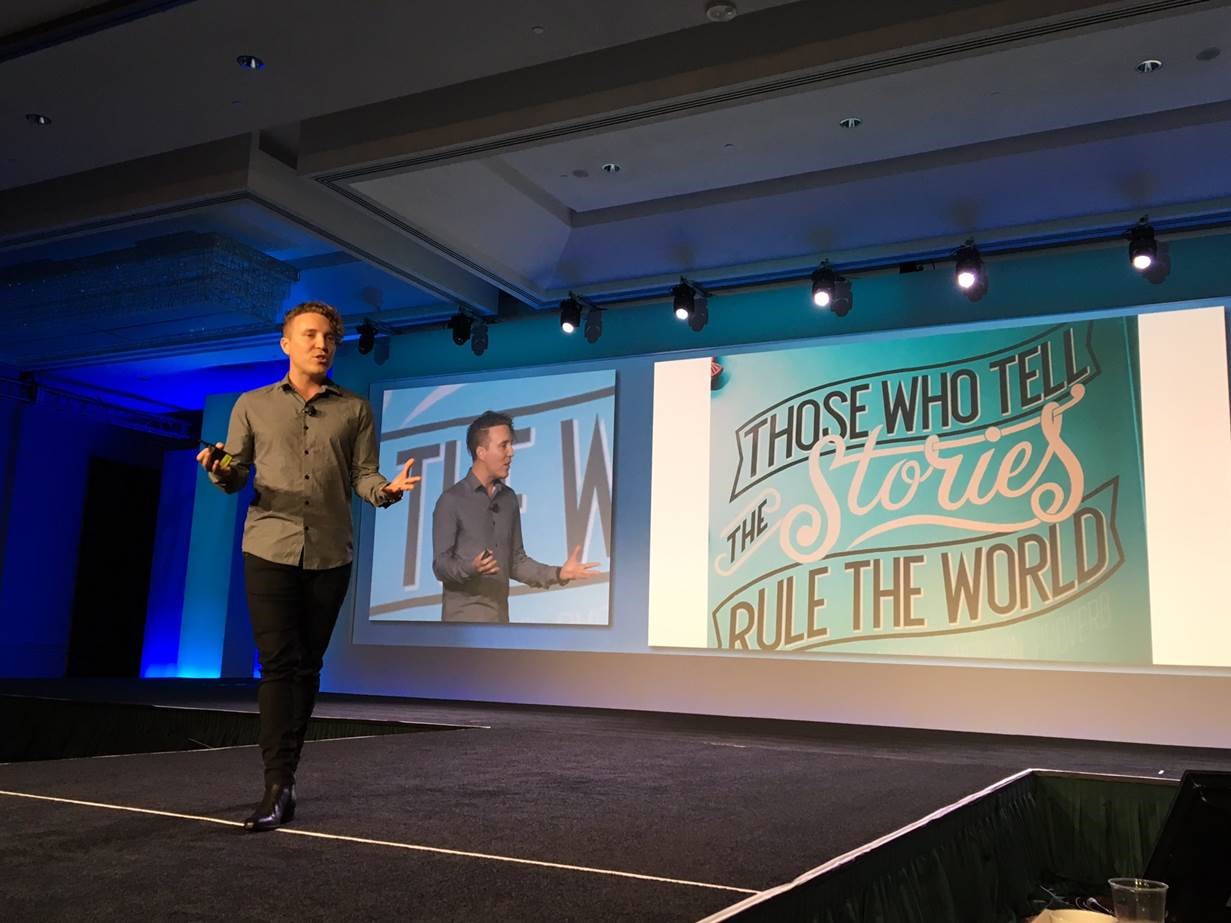Those Who Tell Stories Rule the World

Every year, the best of our industry convenes to talk shop in the OOH world. This year's Outdoor Advertising Association of America/Geopath Conference, which took place earlier this week in New Orleans, was aptly named Look OUT -- and it reminded us to look up (from our phones of course) and look out (presumably at all of the innovation across the industry)! There was so much content to consume, but we got together to name our top 5 takeaways and goals for the upcoming year.
Top 5 Takeaways from OAAA #LOOKOUT2017
- Storytelling. "Those who tell stories, rule the world" said Shane Snow (pictured at top), Chief Creative Officer of Contently. Perhaps the most frequently used word over the two-day conference was "storytelling." Why? In this cluttered landscape, it is the stories that break through. They are how we create relationships with brands and how we connect as a community. While there is a tendency to focus on the disrupters and constant change, many elements of great marketing have stayed the same. A great story still needs to be relatable, novel and contain tension. Focusing on the story humanizes the brand, creating a lasting impression. While core marketing attributes remain constant, the toolbox to communicate has shifted. Instead of gathering around the campfire, we gather around the hashtag or the big game. OOH provides a great platform to share snackable content on massive, impactful canvases that sparks both online and offline communication.
- Media Amplification. There is a consistent blending of the offline and virtual worlds. Today more than ever, OOH needs to work smarter to earn attention. Once you gain that, consumers know where to find and share your brand. In a digitally saturated world, OOH remains a core media function. It is the necessary medium to ensure that the online presence and conversation exist in real life as well. As Joel Lunenfeld, Vice President of Global Brand Strategy at Twitter shared, it is this reason that 25% of the top OOH clients are from the tech/digital category. They understand the value of existing IRL as well as online. Twitter is a great example of impactful OOH, through their visual hashtag campaign during the election. All they needed was a controversial image, a hashtag and their logo. Enough said.
- The Power of Creative. Creativity is an asset. It is a need-to-have. As Rob Dembitz, Global Head of Innovation for Cannes Lions reminds us, OOH at its core is a creative medium. It provides massive canvases to illustrate a brand's story. While much of today's focus remains on the science and new data, it is important to focus on the art. After all, this is what touches consumers though their daily journey.
- Personalization of Brands. People want to be able to connect to a brand when they see it. It can't just be a product; it has to connect with you and what you're interested in. How does this product provide value to you? Or how can you connect with an advertisement? Dawn Hudson, CMO of the NFL, did just that. The NFL was losing viewers and its connection with its audience, so they created the NFL Babies campaign -- evoking the emotion and sentiment behind the sport. Nostalgia and sentimentality tug at your heartstrings and make you more personally invested as a consumer. Brands must find a way to be relatable through personalization to connect with their audience.
- Disruption. Have the top leaders in the world today succeeded because of lack of experience of despite it? It's interesting and notable that two of the most powerful leaders in the world today had no background in their current areas: Travis Kalanick, CEO of Uber, had no background in automotive and President Donald Trump had no background in politics. But both disrupted the system seemingly because of their lack of experience. As Tom Goodwin, Zenith's Head of Innovation will tell you, the world is currently full of disruptors – Tesla, Uber, Facebook, Snapchat, etc. How will more traditional brands respond to this new normal? It is true that old things don't die -- Bitcoin will not replace dollars and digital won't replace TV or OOH, but we all have to play in the sandbox together. Brands who embrace disruption will be the ones who succeed, by using data not as the answer but to inform the stories we tell. Smart data will be the next disruptor to the advertising industry.
Click the social buttons above or below to share this story with your friends and colleagues.
The opinions and points of view expressed in this content are exclusively the views of the author and/or subject(s) and do not necessarily represent the views of MediaVillage.com/MyersBizNet, Inc. management or associated writers.



